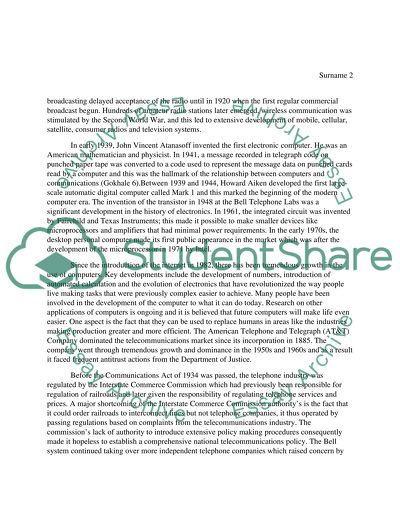Cite this document
(“Brief history of the telephone and communication network highlighting Term Paper”, n.d.)
Brief history of the telephone and communication network highlighting Term Paper. Retrieved from https://studentshare.org/miscellaneous/1593698-brief-history-of-the-telephone-and-communication-network-highlighting-major-events-and-technologies-from-1845-to-the-present-including-the-major-impacts-of-regulation
Brief history of the telephone and communication network highlighting Term Paper. Retrieved from https://studentshare.org/miscellaneous/1593698-brief-history-of-the-telephone-and-communication-network-highlighting-major-events-and-technologies-from-1845-to-the-present-including-the-major-impacts-of-regulation
(Brief History of the Telephone and Communication Network Highlighting Term Paper)
Brief History of the Telephone and Communication Network Highlighting Term Paper. https://studentshare.org/miscellaneous/1593698-brief-history-of-the-telephone-and-communication-network-highlighting-major-events-and-technologies-from-1845-to-the-present-including-the-major-impacts-of-regulation.
Brief History of the Telephone and Communication Network Highlighting Term Paper. https://studentshare.org/miscellaneous/1593698-brief-history-of-the-telephone-and-communication-network-highlighting-major-events-and-technologies-from-1845-to-the-present-including-the-major-impacts-of-regulation.
“Brief History of the Telephone and Communication Network Highlighting Term Paper”, n.d. https://studentshare.org/miscellaneous/1593698-brief-history-of-the-telephone-and-communication-network-highlighting-major-events-and-technologies-from-1845-to-the-present-including-the-major-impacts-of-regulation.


